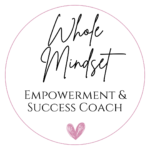Your cart is currently empty!
TpT How To: Link Product Pages to Increase Sales
This is Part Two of a three-part series about setting up your Teachers Pay Teachers product pages. You can find Part One here, and Part Three here.
After posting a TpT dashboard image on Facebook from my TpT shop (similar to the one below), there was an outpouring of questions and curiosity about linking products within product pages, how that worked, etc. So I decided to expand on that with these tutorial posts. This specific post is about how to link and what to link within your TpT product pages. I strongly suggest you read the first post in this series first. The next post covers video and preview info that is used when listing your product on TpT.
Let’s Get Started –
Notice in my TpT traffic tab on the dashboard lines 6 through 9 refer to “policy pages.” These are my product pages. Within those pages are my catalog pages (pages 2A and 2B) below.
In 2A I have linked 6 products as well as my shop where it says “follow.” Obviously if a person is looking at these pages, they have already purchased a product from me. However, I want them to follow my shop as well. So this is a quick way to put that idea out there and I make it as easy as possible for them. Likewise, it puts related products they are likely to enjoy right in front of them.
I don’t recommend more than two pages, max. I also think it is effective to only have a few items on these pages. This allows you to have larger images so their presence is more appealing and effective. Additionally, white space psychologically helps increase sales, just read this LinkedIn article. You also want to make sure the goal you are trying to achieve with these catalog pages is being met; taking advantage of a captive audience. Meaning, you are using this space to share a curated selection of products this specific customer would be interested in. This is called targeted marketing and it is VERY effective. I typically have a 50% conversion rate when products are clicked on from the product pages.
So, if you are still reading, you likely agree this is an underutilized method for increasing sales. The next question is how. How do I know what click came from which product?
It all starts with the TpT dashboard –
Tpt > Dashboard > Traffic > URL Builder
I don’t have any idea when TpT added this URL Builder but holy cow!!! Use it! Be grateful for it! Shout its praise from the rooftops!!! Write love ballads for it…. Okay I’m all done. You get the idea.
I saw this one day, clicked it, and slowly realized I had just changed the game! At least for myself. I realized I could start honing in on where my traffic was coming from.
I’ve gotten some bizarre traffic sources that I have no idea what it is or where it’s from. I even emailed TpT one time asking them and they didn’t know what it was either… So, this URL Builder is super helpful!
For example, “Not Like Any Other Day” (line 6) is the number one selling item in my store. It is a reading comprehension lesson for 5th – 8th grades. In the catalog pages for that product (and all similar products) I share other reading comprehension lessons. Naturally, if you already bought the one product, you’ll be interested in the others. What matters to me as the seller is fine-tuning that traffic flow so I understand from which products do most customers click through?
How do we identify that traffic flow? The amazing URL Builder!
After you click the button to build a URL, you’ll come to this page where you will create a campaign. If you are at all like me, I really felt overwhelmed by that term, campaign. It sounds so involved…
I promise you it is NOT involved AT ALL.
First, copy and paste the product link where it says PRODUCT. You get this by opening your product in your TpT store and copying the URL.
Second, identify the SOURCE for the link. In my case, it was my policy or product pages. I.E. the catalog pages we’ve been discussing this entire blog post. Name them whatever you want so long as it makes sense to you.
When you do this, you’ll have a link generated at the bottom of the page that looks something like this: https://www.teacherspayteachers.com/Product/Back-to-School-Reading-Comprehension-Passage-6th-Grade-Digital-Resource-Activity-11810268?utm_source=blog%20post%20tutorial&utm_campaign=Campaign%20Name%20Example
When I am adding these links to my catalog/product pages, I enter the text I want to have shown instead of this long garbled mess of characters.
Side note – You can also use this Google URL Builder for free. Both are great options. The TpT one is just super convenient.
So, now I have my link. What do I do next…? Add it to the product.
I make all of my products in Canva. Then download them as PNGs. Then in Google Slides I insert each PNG as a background image on each slide. This ensures nothing I created can be altered. It is a form of flattening.
I do this for my catalog pages as well. So, in image six, you are looking at a Google Slide in which I have set my product page as a single background image. (You can change your slide backgrounds by right clicking the slide and clicking “change background image.”) Once the image is in place, I add a square shape with no border or color over each product. I then add the link that corresponds with that product. On a Mac, I do Command + K, then paste the link.
Lastly, I download the entire lesson, catalog pages included, as a PDF. This is the file I use when adding a product on TpT. The links will be clickable. (I have a spot within the product pages where I include the link to the Google Slides so customers have both. Be sure to alter it to be a “copy” rather than “edit” type link.)
VERY Important note –
In my Google Drive, I have a templates folder. One of the templates is the product pages. Everything in this post, I did only once. ONE TIME!
I just copy and paste these slides into each new product I create. I have one of these templates for each type of resource I make. Reading comprehension, for example, gets reading comprehension catalog pages. My other things like journaling activities are going to get catalog pages that align more with that type of activity. Remember we are trying to take advantage of the opportunity to reach our captive audience.
Quick recap, I know all that seems really involved… Simply put, if you want to increase your sales by taking advantage of your captive audience, include up to two catalog pages at the beginning of your TpT products that are curated to meet the interests of that buyer. Do this by adding TpT URL Builder links so you know where the increase in traffic comes from. It’s THAT easy.
Next Up –
In the third post of this series, we look at the TpT preview and product listing areas in which you can add links to increase traffic.

